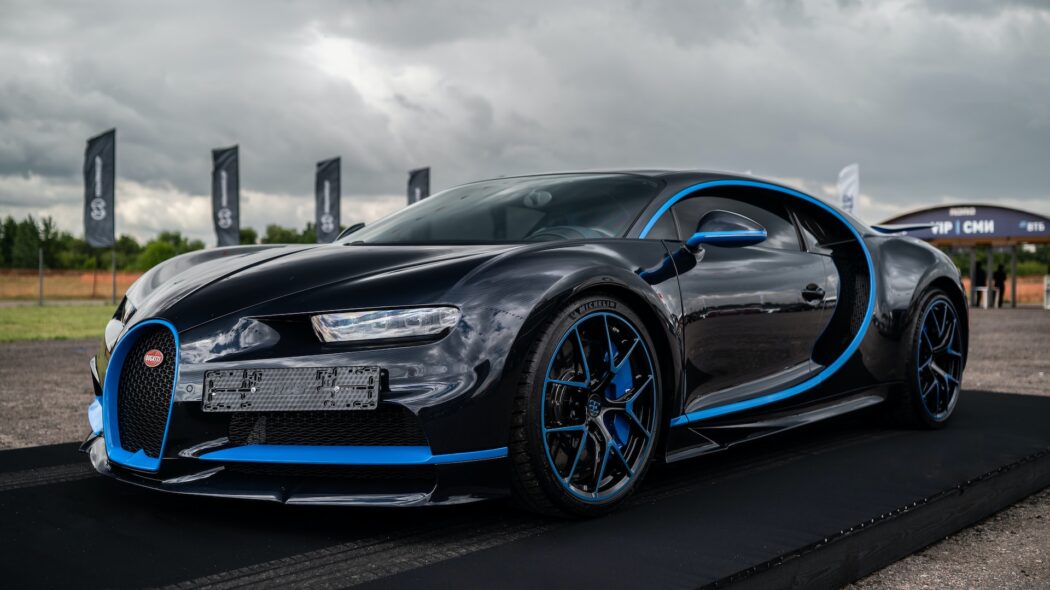Amidst the absence of a heritage akin to traditional supercar manufacturers like Ferrari and Lamborghini, Koenigsegg, a Swedish enterprise founded by Christian von Koenigsegg, has etched its position among the elite of supercars and hypercars. Their commitment to pushing the boundaries of supercar technology keeps them consistently ahead of the competition, potentially even outclassing more established giants in the industry.
The global count of Koenigseggs stands at 215, with plans to deliver 495 units to customers between 2023 and 2024. While these cars are presently rare, Koenigsegg aims to augment its production capacity, making these vehicles progressively more accessible. This piece delves into the reasons behind the scarcity of Koenigsegg cars and explores the likelihood of encountering them more frequently in the near future.
Why the Rarity of Koenigseggs?
The presence of a mere 215 Koenigsegg vehicles since their debut in 2002 translates to a slim chance of encountering one on the streets. Ironically, their rarity contributes to their remarkable visibility in the world of supercars. Car aficionados scour the internet to catch a glimpse of these elusive vehicles, hoping to identify one when they see it. The rarity itself has become a hallmark of Koenigsegg’s identity, setting them apart from the more widespread luxury cars.
The allure of Koenigsegg lies not only in their breathtaking performance but also in the anticipation that shrouds each sighting. The exclusivity they embody serves as a beacon, drawing the gaze of automotive enthusiasts, igniting conversations, and generating anticipation. The rarity lends itself to mystique, sparking curiosity and inspiring fervent admiration even among those who may never have the privilege of owning one.
In the world of luxury automobiles, Koenigsegg’s rarity is a defining trait that intertwines with its exceptional design and engineering. As the journey forward brings the promise of expanded production, the narrative of Koenigsegg’s scarcity will inevitably evolve. However, their legacy as a symbol of high-performance prowess and unattainable elegance will remain etched in the annals of automotive history.
Manufacturing Breakdown of Koenigsegg Models
- CC Prototype | 1;
- CC8S | 6;
- CCR | 14;
- CCX | 29;
- CCGT | 1;
- CCXR | 9;
- CCX Edition | 2;
- CCXR Edition | 4;
- CCXR Special | 2;
- CCXR Trevita | 2;
- Agera | 7;
- Agera R | 18;
- Agera S | 5;
- One:1 | 7 (Including prototype);
- Agera RS | 25;
- Agera Final Edition | 3;
- Regera | 80.
Over the course of two decades since their initial introduction, Koenigsegg has maintained a production pace of approximately one car per year. The following sections delve into the underlying factors behind the rarity of Koenigsegg vehicles.
Koenigsegg’s Profit Motive
Christian von Koenigsegg, both an enthusiast of sports cars and a shrewd businessman, recognizes that sustained production of exceptional supercars hinges on the company’s financial success. Unlike giants like Ford, Koenigsegg lacks the luxury of profiting from mass-produced road cars alongside their supercar offerings. The Swedish manufacturer exclusively focuses on crafting supercars and hypercars.
Given its relatively nascent status in the supercar realm, Koenigsegg employs innovation as a strategy to differentiate itself from the likes of Lamborghini, Ferrari, and other established names. While Koenigsegg vehicles share attributes like speed and exhilarating driving experiences with competitors, the company’s emphasis on groundbreaking innovation places it at the forefront of the industry. However, this innovation-driven approach demands substantial investment in research and development, particularly challenging for a smaller entity like Koenigsegg. Thus, crafting a limited number of cutting-edge, high-performance vehicles targeted at a select clientele remains a solution to balance the financial equation.
Rarity Enhances Allure
Koenigsegg strategically enhances its allure by producing a limited number of vehicles. This scarcity inherently makes the cars more appealing. Even individuals who may never possess the means to own a Koenigsegg find themselves captivated by the brand, consuming content and information about their production. Though the likelihood of owning one remains remote, the allure of these vehicles remains potent.
Eerily, while Koenigseggs usually remain cherished possessions, a bizarre exception involves wealthy individuals treating these extraordinary cars as commonplace. The rarity of an abandoned Koenigsegg, a sight nearly impossible to come across, is a curious anomaly within this narrative. This intriguing dichotomy speaks to the dual nature of Koenigsegg’s presence – revered as a symbols of elite luxury while occasionally finding themselves in unexpected and unusual situations.
Personalization and Koenigsegg’s Rarity
A unique approach that further accentuates the scarcity of Koenigsegg cars is the customization offered to customers. Allowing buyers to personalize their vehicles to their tastes only adds to their exclusivity. For instance, Manny Khoshbin opted to embellish his Koenigsegg Agera RS with gold accents across various elements, incurring a cost exceeding a million dollars. The uniqueness of such customizations translates into increased rarity and, in some cases, substantial profit for the vehicle’s owner.
The Path to Increased Production
Recent production statistics from Koenigsegg indicate a shift in their manufacturing strategy. The company seems poised to align its production levels with those of established competitors. The ambitious plan charts a trajectory of creating a significant number of models, surpassing the sum of their output over the past two decades.
With this transformation, Koenigsegg anticipates meeting the heightened demand for their vehicles. This surge is evident through the push to manufacture more units of the CC850, which was initially slated at 50 but eventually increased to 70 due to robust customer interest. The company’s expansion of its manufacturing facility underscores its intent to enhance production capabilities.
Interestingly, among Koenigsegg’s forthcoming offerings, the Gemera stands out by accommodating four adults and luggage, potentially hinting at a strategic diversification of their product line.

Conclusion
In conclusion, the distinctive narrative of Koenigsegg is one that fuses innovation, scarcity, and the pursuit of excellence. Founded as a challenger to the established supercar hierarchy, Koenigsegg has embraced its newcomer status by championing ingenuity and pushing the boundaries of automotive engineering. This relentless pursuit of pioneering designs and cutting-edge technology has set them apart, enabling them to claim a significant presence among the elite supercar manufacturers.
The deliberate choice to maintain limited production numbers underscores Koenigsegg’s commitment to exclusivity, transforming each vehicle into an embodiment of luxury and prestige. This rarity amplifies their allure, captivating enthusiasts and collectors alike. The anticipation of catching a glimpse of these elusive machines, coupled with their unparalleled performance, continues to resonate within the automotive world.
As Koenigsegg embarks on a trajectory of expanded production, the dynamics of their rarity may undergo transformation. With more vehicles set to grace the roads, the exclusivity they once represented might evolve. However, the captivating essence of Koenigsegg – the embodiment of speed, style, and innovation – is destined to persist. Their journey from a nascent contender to a driving force in the supercar realm exemplifies a fusion of passion, business acumen, and an unyielding dedication to the pursuit of automotive perfection. Koenigseggs, both rare and captivating, stand as testaments to the unrelenting pursuit of excellence in the realm of high-performance automobiles.











